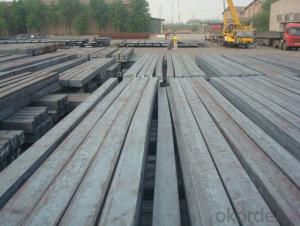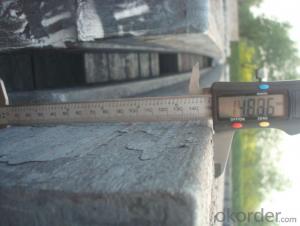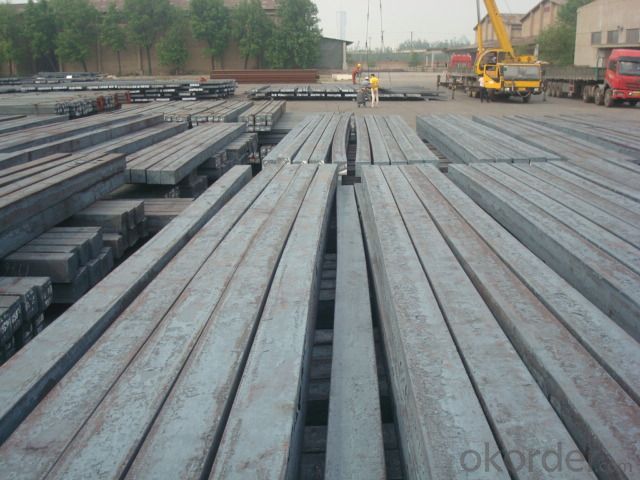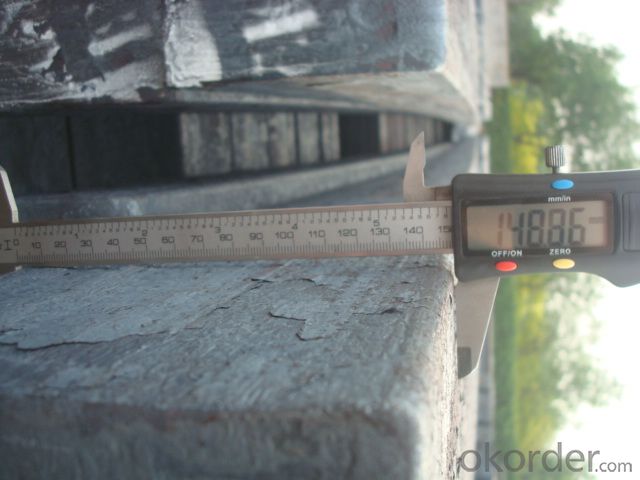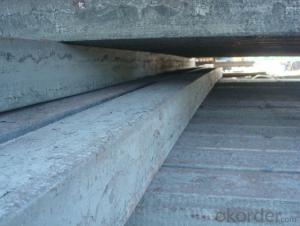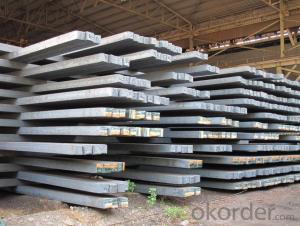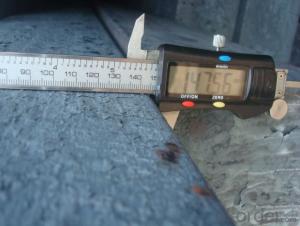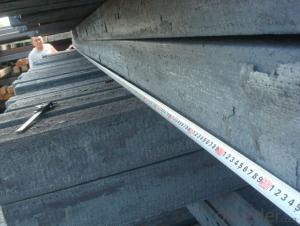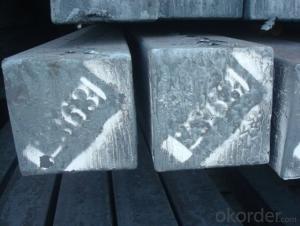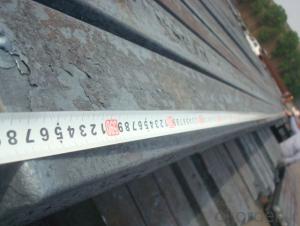Continue Casting Steel Billets Manufactured By Blasting Furnace
- Loading Port:
- Qingdao
- Payment Terms:
- TT OR LC
- Min Order Qty:
- 1000 m.t.
- Supply Capability:
- 10000 m.t./month
OKorder Service Pledge
OKorder Financial Service
You Might Also Like
Continue Casting Steel Billets Manufactured By Blasting Furnace
1.Structure of Continue Casting Steel Billets Manufactured By Blasting Furnace
Continue Casting Steel Billets Manufactured By Blasting Furnace is the raw material of all kinds of steel mill. Billet section of square, round, flat, rectangular and abnormity, etc Several, mainly related to shape of rolled products. Simple rolled section steel, choose cross section of square billet or rectangular billet. rolling The sector products such as flat steel, Angle steel, select the rectangular billet or slab. Had better profiled billet when production beams, channels, and in rolling process Lines and improve the yield. The raw material of round billet is the production of seamless tube.
2.Main Features of Continue Casting Steel Billets Manufactured By Blasting Furnace.
Continue Casting Steel Billet Manufactured By Blasting Furnace section size should meet the requirements of rolling deformation and finished product quality, but also roll strength and biting condition of restrictions. General steel Billet section height H. And the roll diameter D The ratio of the ( namely H/D) Should be less than or equal to zero 0.5 . Length of steel billet by finishing temperature, Rolling time and the length of the product Or times ruler. When heated too long accident prone to bump the furnace wall of steel, too short, furnace bottom utilization rate is not high, influence the heating furnace production. For the production Choose a variety of steel and steel billet, should consider the affinities of billet, as far as possible in order to improve the productivity of the roughing mill, simplify the stock management of workshop.
3. Continue Casting Steel Billets Manufactured By Blasting Furnace Images
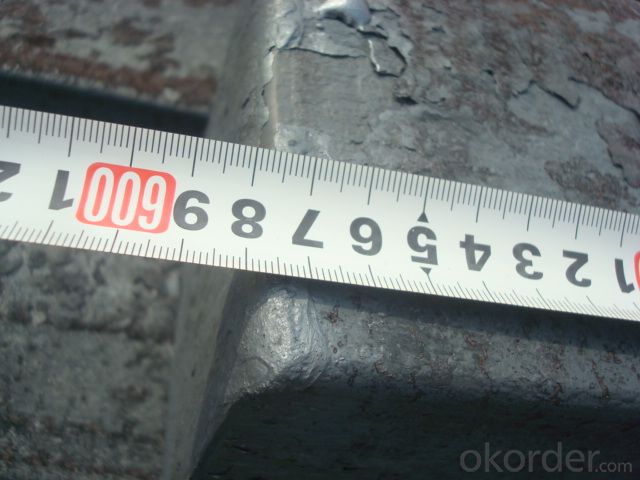
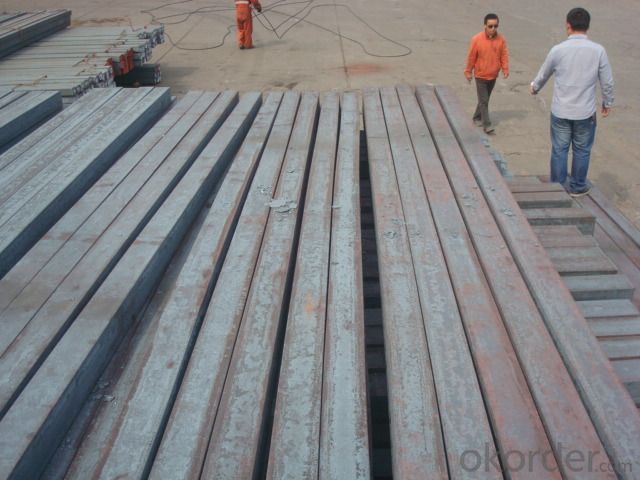
4. Continue Casting Steel Billets Manufactured By Blasting Furnace Specification
Continue Casting Steel Billet Manufactured By Blasting Furnace rolled steel, after processing can be used for mechanical parts, forging parts, processing all kinds of steel, steel Q345B channel steel, wire rod is the role of the billet. Steel billet is used in the production of semi-finished products, generally cannot be used directly for the society. Steel billets and steel are strictly divided into standard, cannot decide to whether the business enterprise of the final product, and according to unified standards to perform the whole society. Typically, billet and the steel is relatively easy to distinguish, but for some steel billet, and have the same specification and same steel purposes (such as rolling tube billet), whether can be used for other industries, whether through steel processing process, whether through a finished product rolling mill processing to distinguish
Material standard The editor Range of thickness: 150-240 - mm + / - 5 mm width range: 880-1530 - mm + / - 20 mm Length: 3700-10000 - mm + / - 500 - mm Cross-sectional size: 64 * 64; 82 * 82; 98 * 98; 124 * 124; 120 * 150; 152 * 164; 152 * 170 mm Length: 9000 mm Section of tolerance: billet: 1.0 + / - 2.0-1.0 + / - 1.0 mm slab: width: + / - 2.0 mm thickness: + / - 3.0 mm The length tolerance: + / - 200 mm Section diagonal tolerance: 3.5-8.0 MM Billet section size protrusions requirements: < 1242 mm, do not allow; > = 1242 mm, < = 2 mm 1242 mm, < = 3 mm Beheading (shear) extension deformation: < 1242 mm billet: no control; The slab: < = 15 mm Surface tilt: no more than billet section 0.1 Bending: every 1 m length is not more than 10 mm The distortion: length < = 5 m, < = 11. ; The length of the < = 7.5 M, < = 5. Material % 3 sp/PS chemical composition: C Mn Si S P
There are three shapes of the steel billets: square billet, slab, rectangular billet The Chinese billet, rectangular billet is mainly suitable for rolling hot rolled strip, building reinforced bar, Ordinary wire, high speed wire rod and various small profile. Of the slab are mainly used for rolling plate and hot coil sheet.
5.FAQ of Continue Casting Steel Billets Manufactured By Blasting Furnace
We have organized several common questions for our clients,may help you sincerely:
①How could we get the quotation by internet?
You can send you inquiry through our website: www.okorder.com or you can email to me dirrectly.
②What about the quality certificate report?
We will send you the original quality certificate from the steel mill.
③How about your facotry's annual capacity?
Our capacity is about 1000,000tons, and if you need more we can supply to you too.
- Q: How are steel billets manipulated during the manufacturing process?
- Steel billets are manipulated during the manufacturing process through various methods such as heating, rolling, forging, and cutting. Heating the billets makes them more malleable and easier to shape. Rolling involves passing the heated billets through a series of rollers to reduce their thickness and create desired shapes. Forging is another technique where the billets are shaped using compressive forces. Finally, cutting is done to obtain specific lengths or shapes required for further processing or fabrication.
- Q: What are the main types of defects found in steel billets?
- The main types of defects found in steel billets are surface defects, internal defects, and segregations. Surface defects refer to any irregularities, cracks, or discontinuities present on the outer surface of the steel billet. These defects can include scale, scratches, pits, and surface cracks. Surface defects can be caused by improper handling during transportation or storage, improper handling during the manufacturing process, or inadequate surface cleaning. Internal defects are flaws or imperfections that occur within the inner structure of the steel billet. These defects can include inclusions, cavities, blowholes, porosity, and non-metallic inclusions. Internal defects can be caused by improper melting and casting processes, improper cooling and solidification, or the presence of impurities in the steel. Segregations refer to the non-uniform distribution of elements or impurities within the steel billet. This can result in areas of the billet having different chemical compositions or mechanical properties. Segregations can be caused by inadequate mixing during the melting process, improper pouring and solidification, or the presence of impurities in the raw materials. Detecting and removing these defects is crucial to ensure the quality and integrity of steel billets. Various non-destructive testing techniques such as visual inspection, ultrasonic testing, magnetic particle testing, and eddy current testing are used to identify and characterize these defects. Once detected, appropriate measures such as grinding, machining, or heat treatment can be employed to remove or mitigate the defects.
- Q: Can steel billets be forged?
- Yes, steel billets can be forged.
- Q: What are the different types of steel billet manipulation equipment?
- In the steel industry, there exists a variety of steel billet manipulation equipment. These machines serve the purpose of handling and manipulating semi-finished steel billets, which later undergo further processing to acquire different shapes and forms. The types of steel billet manipulation equipment are as follows: 1. Billet grabbers: Equipped with either hydraulic or mechanical arms, these machines possess the ability to securely grip and lift steel billets. They are commonly utilized for the loading and unloading of billets from storage areas, trucks, or trains. 2. Billet pushers: These machines find their utility in pushing steel billets along a conveyor system or into a furnace for additional processing. They are generally equipped with hydraulic systems that provide the necessary force to move the billets. 3. Billet transfer cars: Specialized vehicles, known as billet transfer cars, are employed for transporting steel billets within a steel plant. These vehicles feature a flat surface on which billets can be placed and moved from one location to another. 4. Billet cutting machines: These machines are dedicated to cutting steel billets into smaller pieces or removing excess material. They come in various configurations, such as circular saws, shearing machines, or abrasive cutting machines, and can be operated either manually or automatically. 5. Billet heating equipment: This category encompasses induction heating systems or furnaces used to heat steel billets to a specific temperature for further processing. These machines are indispensable in numerous heat treatment processes, including annealing or quenching. 6. Billet straightening machines: These machines are responsible for rectifying any deformations or bends that may occur during the billet manufacturing process. By applying controlled pressure and tension, they ensure that the billets are perfectly straight before proceeding to further processing. 7. Billet inspection equipment: These machines serve the purpose of inspecting the quality and dimensions of steel billets. They employ various techniques, such as ultrasonic testing, magnetic particle testing, or visual inspection, to identify any defects or flaws in the billets. Each type of steel billet manipulation equipment plays a vital role in the steel manufacturing process, guaranteeing the efficient handling, processing, and quality control of steel billets before they undergo transformation into finished products.
- Q: How are steel billets used in the manufacturing of furniture and fixtures?
- Steel billets are an essential component in the manufacturing of furniture and fixtures due to their versatility and durability. These billets, which are semi-finished metal products, serve as the raw material for creating various components of furniture and fixtures. One common use of steel billets in furniture manufacturing is for creating frames and structural supports. The billets are shaped and cut into specific dimensions to form the framework of chairs, tables, and other pieces of furniture. The strength and rigidity of steel make it a preferred choice for ensuring the stability and longevity of these products. In addition to frames, steel billets are used for producing hardware components of furniture and fixtures. This includes hinges, locks, drawer slides, and other mechanisms that require strength and precision. By using steel billets, manufacturers can ensure that these components can withstand the wear and tear associated with daily use. Steel billets are also utilized in the production of decorative elements in furniture and fixtures. They can be molded, bent, or welded into various shapes and designs to add aesthetic appeal to the final product. These decorative elements may include trimmings, accents, or ornamental details that enhance the overall appearance of furniture and fixtures. Furthermore, steel billets are often used in the manufacturing of fixtures such as shelving units, display racks, and storage systems. The durability and load-bearing capacity of steel make it an ideal material for constructing these items, ensuring that they can withstand heavy loads and provide long-term support. In summary, steel billets play a crucial role in the manufacturing of furniture and fixtures. They are used to create frames, hardware components, decorative elements, and various types of fixtures. Their strength, durability, and versatility make them an essential raw material for producing high-quality and long-lasting furniture and fixtures.
- Q: What is the average weight of a steel billet?
- The average weight of a steel billet varies depending on its dimensions and specific grade. However, a typical range for the average weight of a steel billet is between 1,000 and 5,000 pounds.
- Q: How do steel billets compare to other steel products?
- Steel billets are a type of semi-finished steel product that is widely used in various industries. When comparing steel billets to other steel products, there are several key factors to consider. Firstly, steel billets are considered to be more versatile compared to other steel products. This is because they can be easily transformed into various shapes and sizes through different manufacturing processes such as rolling, forging, and extrusion. This versatility makes steel billets suitable for a wide range of applications, including construction, automotive, and manufacturing industries. In terms of strength and durability, steel billets are known for their high tensile strength and excellent resistance to corrosion. This makes them suitable for use in demanding environments and applications where strength and durability are essential. Other steel products may have similar properties, but steel billets are often preferred due to their ability to be customized into specific shapes and sizes. Another important aspect to consider is the cost-effectiveness of steel billets. Compared to fully finished steel products, steel billets are more cost-effective as they require less processing and finishing. This leads to reduced production costs, which can be advantageous for industries seeking to minimize expenses while still maintaining high-quality steel. Additionally, steel billets are also more environmentally friendly compared to other steel products. Since they undergo less processing and finishing, the carbon footprint associated with their production is significantly lower. This aspect is particularly important for industries that prioritize sustainability and aim to reduce their impact on the environment. In conclusion, steel billets offer several advantages when compared to other steel products. Their versatility, high strength, cost-effectiveness, and environmental friendliness make them a preferred choice in various industries. The ability to customize their shape and size, coupled with their durability and resistance to corrosion, further enhances their appeal. Overall, steel billets are a reliable and efficient option for those seeking high-quality steel products.
- Q: What are the different surface treatments for improved surface hardness in steel billets?
- Some of the different surface treatments for improved surface hardness in steel billets include carburizing, nitriding, induction hardening, and boronizing. These treatments involve introducing carbon, nitrogen, or boron into the surface layer of the steel to enhance its hardness and wear resistance.
- Q: What are the specifications for steel billets used in the aerospace industry?
- The specifications for steel billets used in the aerospace industry are highly precise and stringent. These billets are required to meet specific standards in order to ensure the safety and durability of aircraft components. First and foremost, the steel used for aerospace billets must have exceptional strength and toughness. It should have a high tensile strength and be capable of withstanding extreme forces and stresses that may be encountered during flight. The steel must also have excellent fracture resistance to minimize the risk of catastrophic failure. Additionally, the steel billets must possess excellent resistance to corrosion and oxidation. This is crucial as aircraft often operate in harsh environments, including high altitudes and exposure to various chemicals. The steel should be resistant to rust, pitting, and other forms of degradation that can compromise its structural integrity over time. Furthermore, the steel billets used in aerospace applications must have precise dimensional tolerances and uniformity. The billets should be manufactured to exact specifications to ensure consistency in the production of aircraft components. This includes the size, shape, and surface finish of the billets, which are crucial for proper fitting and assembly. In terms of chemical composition, the steel used for aerospace billets may vary depending on the specific application and component being manufactured. However, it typically includes elements such as carbon, manganese, chromium, nickel, and molybdenum. These alloying elements enhance the mechanical properties of the steel, such as hardness, toughness, and heat resistance. Furthermore, the steel billets used in the aerospace industry undergo rigorous testing and quality control procedures. This includes non-destructive testing methods like ultrasonic inspection, magnetic particle inspection, and dye penetrant inspection to detect any internal defects or discontinuities. In summary, the specifications for steel billets used in the aerospace industry involve exceptional strength, toughness, corrosion resistance, dimensional accuracy, and precise chemical composition. These strict requirements ensure the reliability and safety of aircraft components, making them capable of withstanding the demanding conditions faced during flight.
- Q: How does the composition of steel affect the properties of steel billets?
- The composition of steel, including the ratios of different elements and the impurities present, significantly influences the properties of steel billets. For instance, the amount of carbon in steel affects its strength and hardness, with higher carbon content resulting in harder and stronger steel. Alloying elements like chromium, nickel, and molybdenum can be added to enhance specific properties such as corrosion resistance, heat resistance, or toughness. Furthermore, impurities like sulfur and phosphorus can negatively impact the ductility and weldability of steel. Hence, the composition plays a crucial role in determining the overall quality and performance of steel billets.
Send your message to us
Continue Casting Steel Billets Manufactured By Blasting Furnace
- Loading Port:
- Qingdao
- Payment Terms:
- TT OR LC
- Min Order Qty:
- 1000 m.t.
- Supply Capability:
- 10000 m.t./month
OKorder Service Pledge
OKorder Financial Service
Similar products
Hot products
Hot Searches
Related keywords
